Located in Tirupati in southern India, the industrial set-up of Amara Raja, a pioneering manufacturer of car batteries, spreads across a 140-acre parcel of land. The administration and operations of the plant are overlooked by offices placed at different locations within this parcel, having grown organically over the years. The corporate office is designed by Edifice Consultants to be a consolidated space with varied departments such as Corporate, IT Services and other shared services under one roof.
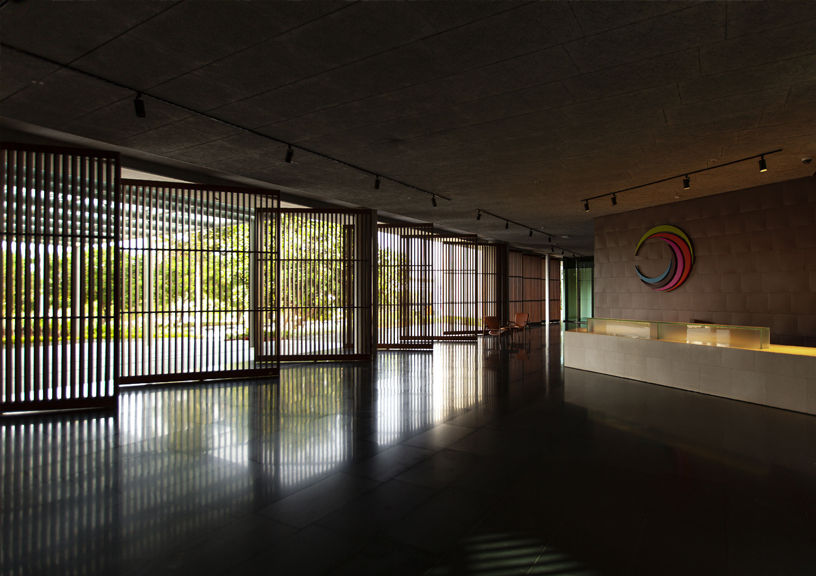
The proposed project site is located on the eastern end of the campus, close to the main entry. Accessible via a road towards the east side of the plot, the site slopes down from south to north, with marvellous views of the surrounding environment towards the northern end. The site is surrounded by dense vegetation, primarily of red sanders in the south and west, and mango plantations towards the north. On the east side of the plot is a factory building, towards the north-east is a workshop block, and towards the south-west lies the Chairman’s bungalow.
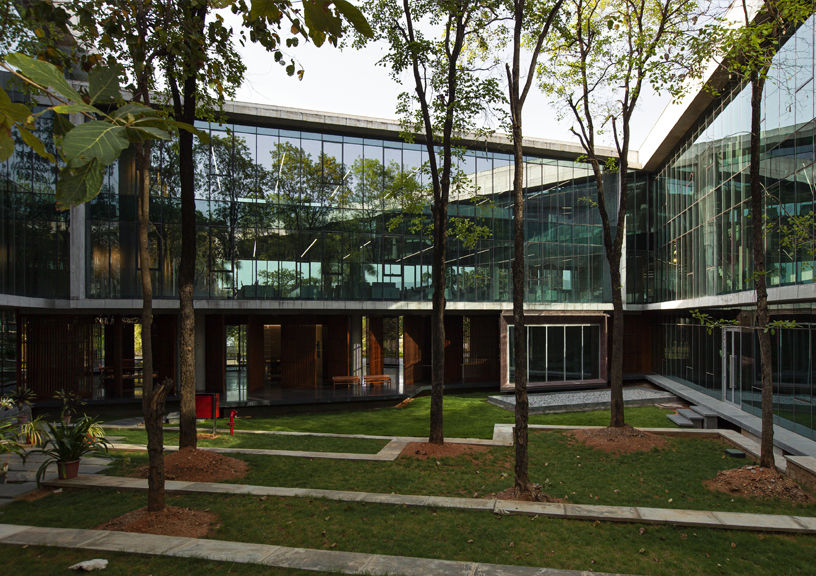
Keeping in mind the context of the site, the built mass is designed with minimum intervention to the surrounding environs. The pre-existing administration building block was deemed structurally unsound, prompting its demolition. The plinth footprint of the former building was utilized as the foundation for a substantial portion of the new construction, thereby minimizing disturbance to the surrounding natural environment. This approach enabled maximum utilisation of the existing infrastructure and reduction in impact on the surrounding ecosystem, while still accommodating all requirements for the built mass and preserving the integrity of the local ecosystem.

Workspaces are designed such that employee wellbeing and efficiency are promoted by connecting them with the greens around. Spread across three axes, H-shaped linear masses have been created primarily in those areas devoid of the red sanders trees, which also resulted in segregation of the three departments. They are designed with courtyards that envelop some of the existing red sanders tree cover within the building. The structure facing the factory unit has been tilted to minimize the extent of tree-cutting and to create a buffer space between the factory and the built form.
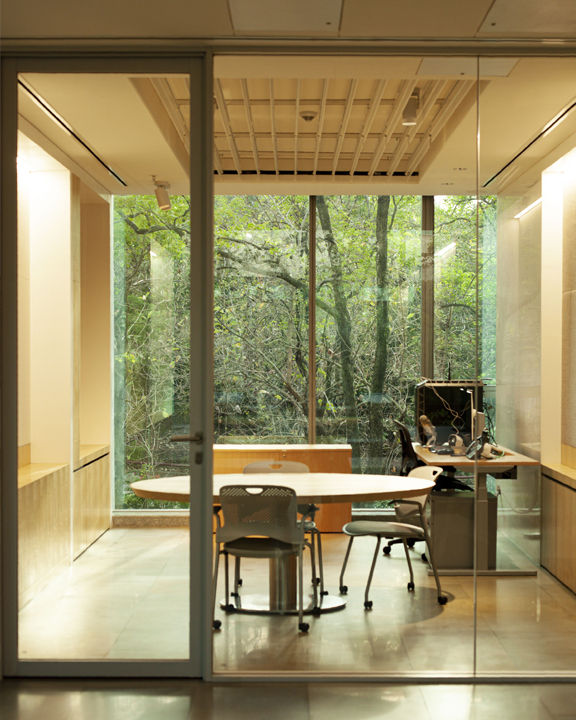
The block consists of three rectangular wings, namely the west wing, central wing and east wing, with a column grid of 10m x 8m flanked by cantilevers on either side. Central cores are planned on the east and the west wings respectively, which house the various service spaces such as elevators, AHU, electrical rooms, HUB rooms and toilets. The west wing has a central scissor staircase and the east wing consists of two single flight staircases. The west wing stands four levels tall, while the central and the east wings are built with three levels.
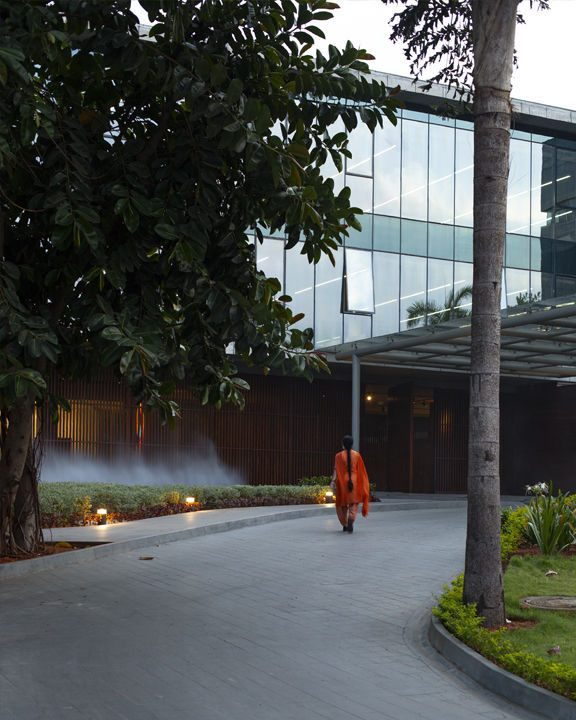
The ground floor is designed as a social public space with the central wing housing the open reception and shared services such as the cafes and the library—all defined in transparent enclosures, occupying minimal footprint set in a generous free-flowing landscape, preserving many of the existing trees. The first floor comprises entirely of shared services and the second floor is shared by the corporate and IT services. The uppermost floors are designed to accommodate the corporate floor with the Chairman and MD’s cabins. The height of the overall development was deliberately restricted to that of the surrounding red sanders trees, so that the building disappears / fades into the background. This also resulted in minimal glare and heat gain from the west and east.
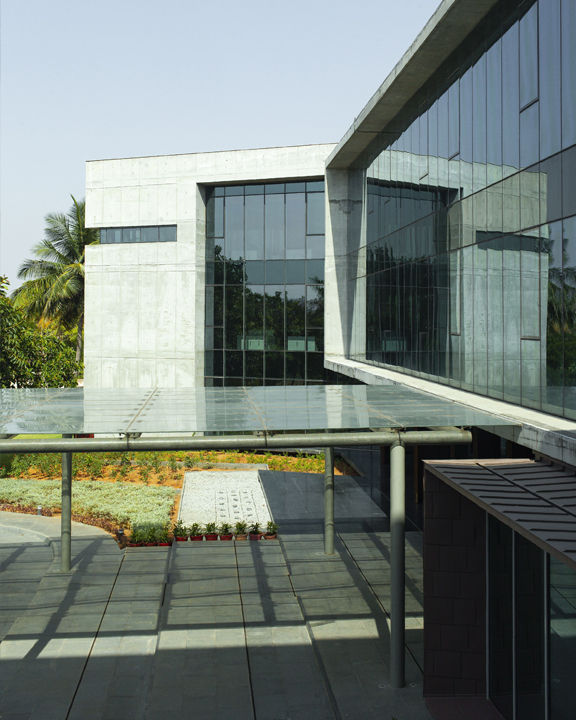
Employing the concept of biophilia in the design strategy of the façade has resulted in a rather transparent building that connects its occupants with the surrounding greens. An organic building envelope is structured with a neutral façade in exposed concrete and glass. While the northern façade is designed to be clean and minimalistic to allow the ingress of indirect light, the southern façade is protected by architectural overhangs.
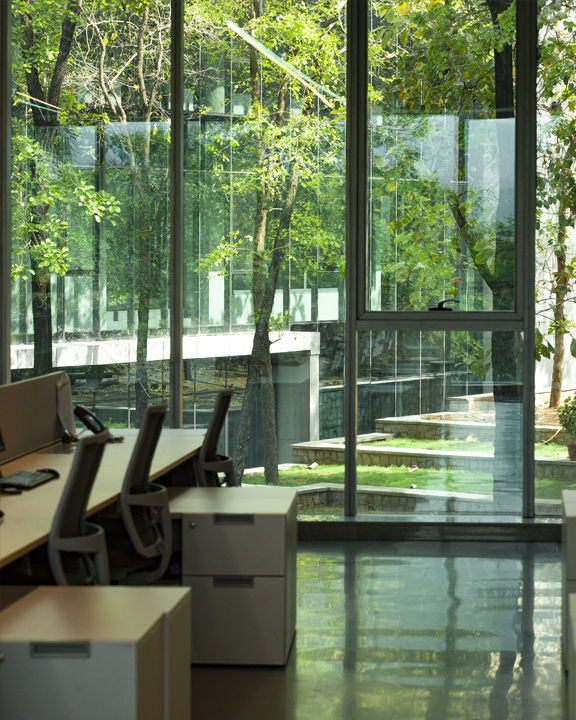
The design of the large grid results in a flexible, open office plan. The play of built mass with floating plinths and cantilevered slabs creates a sense of lightness and allows the landscape to flow in. The reception area is kept open on the north-south end to allow prevailing wind funnels through the openings to spread across the courtyard inside.
Full-height cabin spaces are planned at the end of each wing on the upper levels, to optimize the views of the site. Workstations are planned at the centre of the blocks with corridors on either ends for easy access and movement.
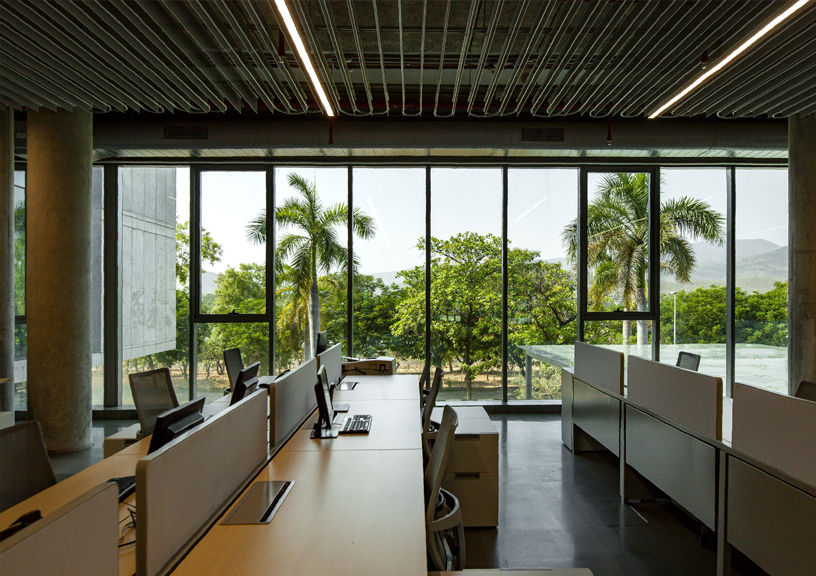
The materials used in the interiors are organic and neutral—wood decking and panelling cover most of the interior spaces, with exposed concrete ceiling, walls and floors. A sustainable approach is adopted towards water and energy conservation by incorporating measures such as rainwater harvesting, reusing water from the STP for flushing, maintaining the landscape, feeding into the cooling tower, and use of solar PVs. A thermally controlled environment is created within the building envelope with the design of a radiant-cooled HVAC system that is energy and cost efficient, yet simple and flexible with respect to its operation and maintenance.
The overall strategic intent of preserving the existing landscape on site while creating a corporate workplace that ensures productivity, comfort and well-being of the employees, echoes through the design of the resultant linear floor plates that ensure natural light ingress, while maximizing the development on the existing building footprint. The building becomes a benchmark in office design with its intelligent, efficient design strategy and planning, resulting in a dynamic work environment.
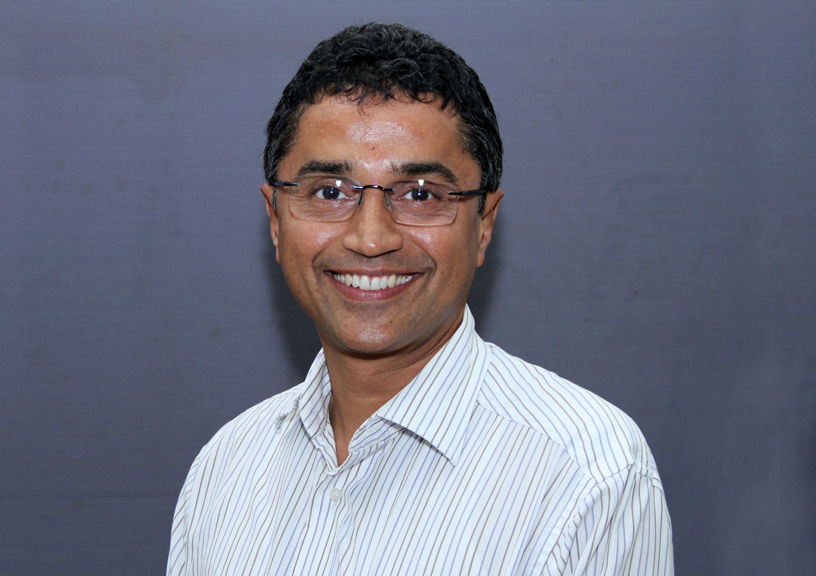
About Ravi Sarangan, Founder, Edifice Consultants
Ravi co-founded Edifice, and is the Director at Edifice. A recipient of numerous awards and recognitions from within the fraternity, Ravi has been instrumental in growing Edifice to our current pre-eminent position, within the profession. He currently oversees Edifice’s brand management, handles Key Clients, and participates in the creative design process. Ravi also delivers lectures on the design and practice of Architecture as well as serves on the jury of various eminent design award competitions. Additionally he spends time in Identifying new leaders and grooming them to be future leaders within Edifice.
FACT FILE
Client: Amara Raja Group
Principal Architects: Edifice consultants Pvt. Ltd.
Project Representative: Naveen Thomas and Sanjay Nayak
Architecture Team: Ravi Sarangan, Naveen Thomas, Aneesh Kumar, Druv Prajapati, Vidya Narayani
Interior Design Team: Sanjay Nayak, Rohan Bhagat
Site Area: 0.6 Acres
Built-Up Area: 80,000 sq. ft.
